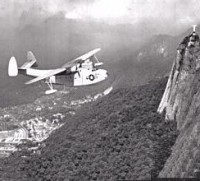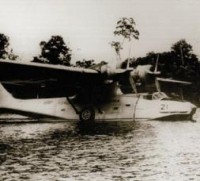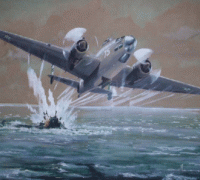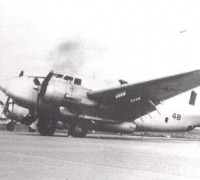ANTI SUBMARINE WARFARE SOUTH ATLANTIC * - ANTI SUBMARINE TACTICS
13)LOCKHEED PV 2 HARPOON
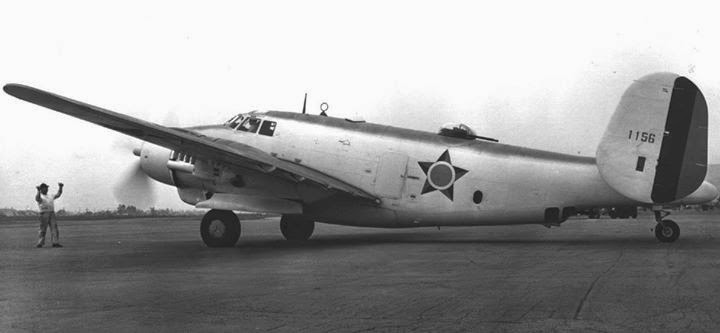
Above one Harpoon from Brazilian Air Force is seen taxiing to the ramp following one patrol and convoy escort mission. Photo. http://castropr.blogspot.com/
History: The Lockheed Company's early success in WWII with their Hudson bomber (a derivative of their Model 14 Super Electra used by the Royal Air Force) led them to propose a specialized bomber and reconnaissance version of their Model 18 Lodestar. Lockheed designated the new prototype the Model 37, and after a brief trial period, the RAF ordered a total of 675 of them, calling the new aircraft the Ventura.
They were larger, heavier, carried a larger bomb load, and had better armament than the Hudson, and entered RAF service on 3 November 1942. Very quickly, the Ventura's limitations as a daylight bomber became apparent, as a large number were lost to enemy fire. They were turned over to RAF Coastal Command for domestic defense duties, and more than half of the original order was cancelled.
These spare planes were acquired by the US Army Air Force, designated as B-34s and B-37s, and were assigned to maritime patrol duties. The US Navy also placed an order, and their first airplanes were designated PV-1 Ventura. In June 1943, the Navy ordered a long-range, slightly-redesigned version, and this version became the PV-2 Harpoon. At least 2,100 navalized Venturas and Harpoons were delivered before the end of the war, and the total number of deliveries to all customers exceeded 3,000. Venturas, especially, were delivered to a number of other nations, including Brazil, France, and all the Commonwealth nations.
PV-1s and PV-2 saw combat in the Pacific Theater, and served in the US Naval Reserve until the late 1940s. Some surplus models were supplied to nations such as Italy, Japan, the Netherlands, Portugal and Peru. Quite a few others were converted into civilian VIP transport aircraft by Howard Aero Services in the USA, and others were converted into mosquito-spray planes. Now, only a few remain airworthy as warbirds.
Nicknames: Pregnant Pig (RAF nickname); Lexington (USAAF designation for B-34s and B-37s)
Specifications (PV-1):
Engines: Two 2,000-hp Pratt & Whitney R-2800-31 radial piston engines.
Weight: Empty
20,197 lbs., Max Takeoff 31,077 lbs.
Wing Span:
65ft. 6in.
Length:
51ft. 9in.
Height:
11ft. 11in.
Performance:
Maximum Speed: 322 mph at 13,800 ft.
Ceiling:
26,300 ft.
Range:
1,360 miles
Armament:
Two 12.7-mm (0.5-inch) forward-firing machine guns; two more in dorsal turret; two 7.72-mm (0.3-inch) machine guns in ventral turret; plus up to 3,000 lbs. of bombs or depth charges, or one torpedo.
